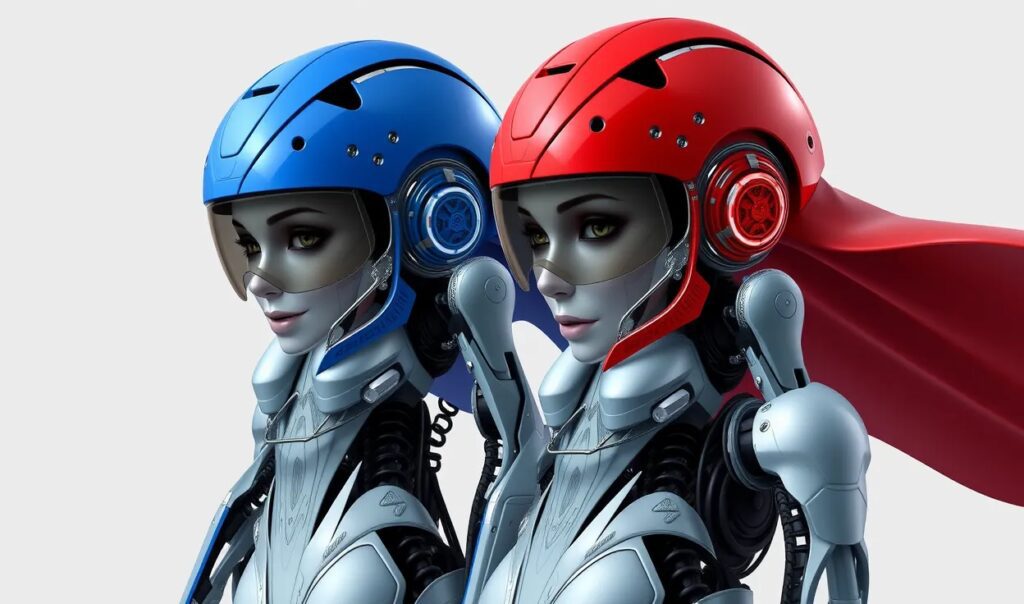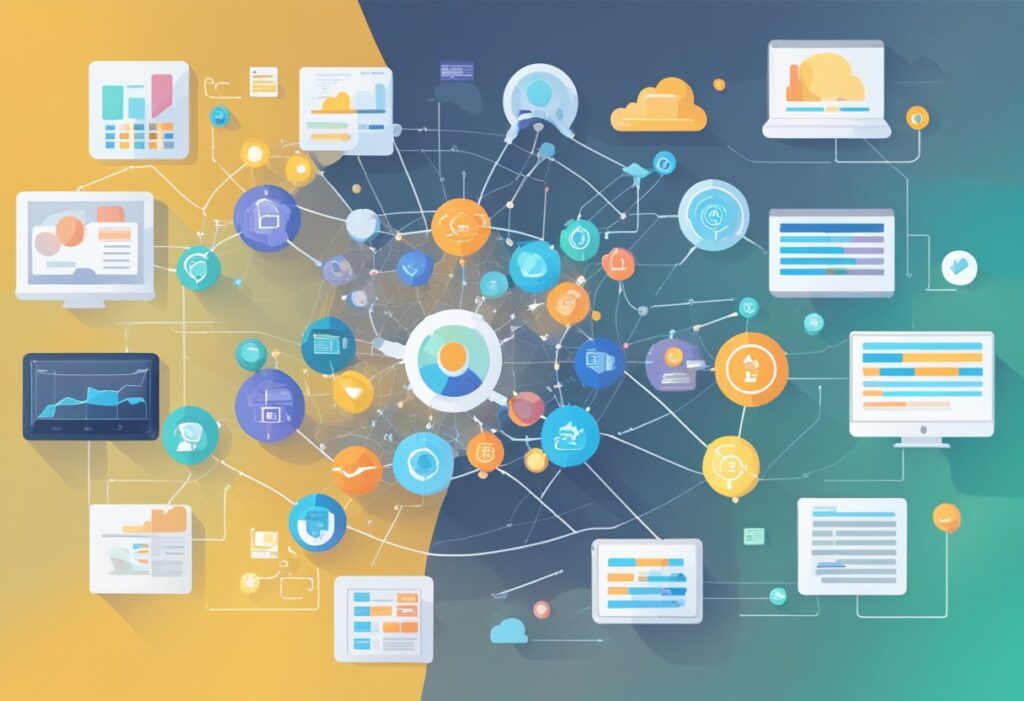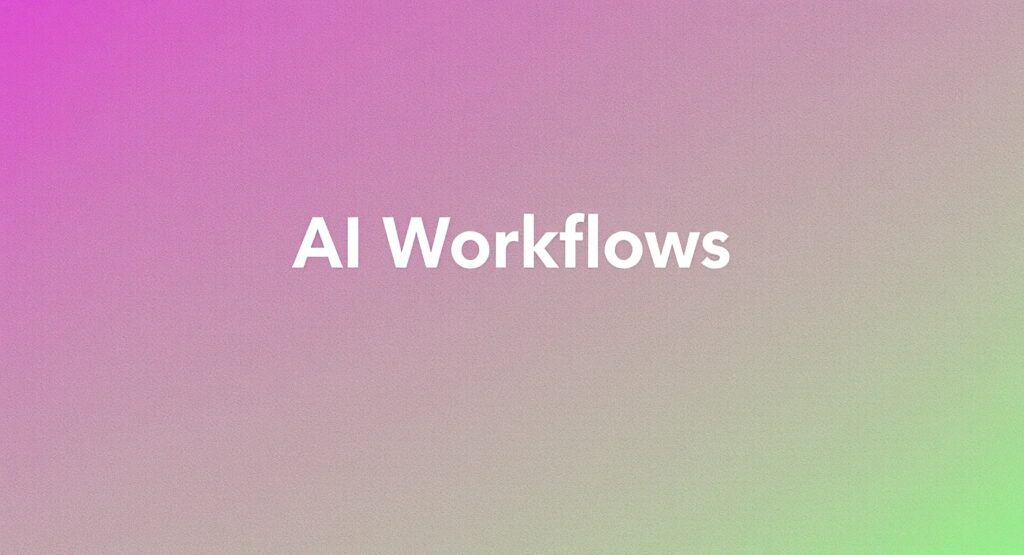
What Are Digital Twins?
The Essence of a Digital Twin
A digital twin is a virtual replica of a physical object, system, or process. It uses real-time data and advanced modeling to mirror its real-world counterpart. This dynamic pairing enables continuous feedback, analysis, and optimization.
In complex systems, digital twins serve as a bridge between physical assets and digital insights, fostering better understanding and efficiency.
How Digital Twins Are Built
Digital twins are crafted using three main elements:
- Sensors: Embedded in physical systems to collect real-time data.
- Analytics: Algorithms analyze the incoming data for patterns, anomalies, or opportunities.
- Visualization: Interactive dashboards or simulations display the twin, helping users see system dynamics at work.
This combination empowers organizations to dive into a level of detail that was previously unattainable.
Industries Leveraging Digital Twins
While manufacturing was the first to adopt this tech, industries like healthcare, aerospace, and urban planning are now joining the fold. From simulating patient treatments to improving city infrastructure, the possibilities are vast.
The Interoperability Challenge in Complex Systems
Why Interoperability Matters
In today’s interconnected world, systems don’t work in isolation. Complex environments like smart cities or supply chains rely on multiple systems—each potentially built on different platforms. Lack of interoperability can result in inefficiencies, errors, and lost opportunities.
For example:
- A smart factory might struggle to integrate new IoT devices with legacy systems.
- Healthcare providers may find it hard to sync data across various electronic medical record (EMR) platforms.
Digital twins simplify these connections, acting as translators and coordinators.
Common Barriers to Interoperability
- Siloed Data: Systems often store data in incompatible formats.
- Legacy Technologies: Outdated infrastructure resists integration.
- Standards Gaps: Without shared frameworks, communication across systems breaks down.
These hurdles prevent seamless collaboration, ultimately dragging down performance.

How Digital Twins Address Interoperability
Acting as a Central Hub
A digital twin can serve as a central hub for data collection and interpretation. By consolidating inputs from various sources, it creates a unified platform for decision-making.
For instance, in energy grids, digital twins gather inputs from:
- Renewable energy sources
- Traditional power plants
- Consumer smart meters
This real-time integration ensures the system runs efficiently while reducing downtime or overloading.
Translating Between Systems
Digital twins employ machine learning to harmonize data from disparate systems. This reduces compatibility issues and ensures that all components work in tandem. Think of it like a multilingual translator, bridging gaps between systems.
Imagine a logistics network using a digital twin to integrate warehouse robotics with delivery systems. It ensures products flow seamlessly, no matter the tech driving each step.
Predicting and Avoiding Failures
Interoperability isn’t just about connectivity—it’s about resilience. By analyzing data streams, digital twins anticipate potential issues before they disrupt operations.
In aviation, for example, a digital twin can monitor an engine’s performance and alert engineers about maintenance needs, avoiding costly delays.
Real-Time Collaboration Across Ecosystems
Breaking Down System Silos
Complex systems often involve multiple stakeholders working on separate components. Digital twins enable real-time collaboration, unifying diverse teams and systems under a single framework.
For example:
- In smart city projects, urban planners, architects, and utility providers can work together seamlessly.
- A shared digital twin of the city provides a clear picture of traffic patterns, energy usage, and infrastructure performance.
This holistic view fosters data-driven collaboration and eliminates guesswork.
Enabling API Integration
Digital twins rely heavily on APIs (Application Programming Interfaces) to connect systems. These APIs act as gateways, ensuring that every subsystem can communicate effectively.
In healthcare, this might look like a digital twin of a patient that integrates:
- Wearable device data
- Hospital imaging systems
- Electronic health records
The result? A comprehensive view of patient health, enabling faster and more accurate diagnoses.
Supporting Remote Operations
By integrating and interpreting inputs from multiple systems, digital twins support remote monitoring and control. This is particularly valuable in industries like oil and gas, where field sites are often far from central operations.
Operators can view and control assets from anywhere, reducing travel costs and minimizing downtime.
Digital Twins and Standards Development
Building Unified Frameworks
A significant advantage of digital twins is their ability to push forward standardization across industries. By simulating systems and sharing insights, they help define what “interoperability” should look like in specific fields.
For example, in autonomous vehicles, digital twins are used to test communication protocols between cars and traffic systems. These tests guide the development of universal standards for vehicle-to-everything (V2X) communication.
Encouraging Open Systems
Digital twins thrive in open ecosystems, where data flows freely across platforms. Initiatives like the Open Group’s Digital Twin Consortium aim to create frameworks that promote openness and reduce vendor lock-in.
Industries that embrace open standards see faster innovation and easier system integration.
Reducing Development Costs
By simulating interoperability scenarios, digital twins help companies test integrations before committing resources. This reduces the risk of costly mistakes during implementation.

Practical Applications of Digital Twins in Complex Systems
Smart Cities: Connecting Urban Systems
Digital twins are transforming urban planning and management, ensuring systems work in harmony. A city’s digital twin integrates data from transportation, utilities, and emergency services to create a unified operational view.
For example:
- Traffic management systems use digital twins to optimize signal timing and reduce congestion.
- Utility providers leverage them to monitor water and energy usage, detecting inefficiencies in real-time.
This level of integration ensures cities can respond faster to crises and plan for future growth.
Manufacturing: Streamlining Production Lines
In manufacturing, digital twins create a connected ecosystem where machines, robots, and humans collaborate seamlessly.
- Predictive maintenance algorithms reduce equipment downtime by identifying issues early.
- Assembly lines benefit from real-time insights, improving efficiency and reducing waste.
For instance, aerospace companies use digital twins to design, test, and optimize aircraft components, ensuring every part meets exacting standards.
Healthcare: Enhancing Patient Care
Digital twins are unlocking interoperability in personalized medicine. By combining data from wearables, imaging systems, and hospital records, they offer a complete view of a patient’s health.
In surgery, a digital twin of a patient’s organ system can guide doctors during procedures. Beyond the operating room, digital twins monitor chronic diseases, providing early warnings for conditions like diabetes or heart disease.
Energy: Optimizing Grid Performance
The energy sector relies on digital twins to balance supply and demand across increasingly complex grids. These systems integrate renewable sources like wind and solar with traditional power plants.
Key benefits include:
- Identifying faults or inefficiencies in real-time.
- Ensuring smooth integration of new energy technologies, like battery storage or EV charging networks.
Logistics: Simplifying Supply Chains
In logistics, digital twins are key to maintaining supply chain visibility. They integrate warehouse systems, transportation fleets, and customer platforms, ensuring every element works together.
By simulating scenarios like demand surges or supply disruptions, businesses can adapt their operations proactively instead of reacting after the fact.
How Digital Twins Reshape Complex Systems
Unifying Digital and Physical Worlds
Digital twins operate at the intersection of cyberspace and the physical world, offering unparalleled insights by mirroring the real-time behavior of systems. This synchronization transforms data into actionable intelligence, fostering adaptive systems that learn and improve over time.
Closing the Feedback Loop
A major innovation lies in feedback loops—digital twins continuously analyze system performance and send insights back to physical counterparts. This real-time feedback enhances:
- Operational efficiency, by automating adjustments.
- Resource allocation, ensuring no energy, material, or time is wasted.
- Long-term strategy, as systems refine themselves based on historical trends.
Augmented Decision-Making
With digital twins acting as intelligent advisors, human operators can focus on high-level decision-making. In scenarios where complexity overwhelms intuition, digital twins simulate thousands of scenarios to pinpoint optimal solutions.
For example, in urban water management, digital twins simulate rainfall patterns and population growth to inform infrastructure investments that can mitigate flooding or ensure adequate supply.
Interoperability Beyond Data Sharing
True interoperability goes beyond mere data sharing. Digital twins enable context-aware systems, ensuring that:
- Different subsystems “understand” and adapt to shared goals.
- Information is meaningful, even when translated across formats and platforms.
- Collaborative ecosystems emerge, where one system’s output serves as another’s input.
Adaptive Protocols for Dynamic Systems
Digital twins help define and adapt communication protocols in systems that evolve. For instance:
- In manufacturing, twins ensure seamless integration as robots are reprogrammed or new machinery is added.
- In healthcare, they harmonize protocols between legacy equipment and next-gen devices, ensuring uninterrupted patient care.
Breaking Down Organizational Silos
Interoperability isn’t just technical; it’s also organizational. Digital twins foster cross-department collaboration by creating a shared, interactive model. Stakeholders from IT, operations, and strategy can visualize and align on objectives in real time.
Building Resilience with Predictive Interoperability
Simulating Future Scenarios
Digital twins are a crystal ball for systems, allowing stakeholders to simulate “what-if” scenarios that test the limits of interoperability. These simulations reveal:
- Potential failure points under stress, like during natural disasters or cyberattacks.
- Opportunities to scale systems without breaking existing integrations.
For example, in aviation, digital twins simulate global air traffic to predict how new flight routes or technologies might impact safety and efficiency.
Enhancing Cybersecurity
In increasingly connected systems, digital twins are emerging as cybersecurity enablers. They act as sentinels, constantly monitoring for anomalies in system communication. If malicious activity is detected, the twin isolates affected subsystems to prevent widespread disruption.
The Emergence of Self-Healing Systems
The future of digital twins lies in autonomous interoperability—systems that identify and correct their own issues without human intervention.
- AI-powered twins detect anomalies and adapt protocols instantly.
- Self-healing networks reroute data automatically, ensuring continuity in communication.
This transformation is already underway in smart grids, where digital twins detect and resolve faults in milliseconds, minimizing outages.
The Economic Case for Digital Twins
Reducing Costs Across Lifecycles
Digital twins cut costs at every stage:
- Design: Simulations reduce the need for physical prototypes.
- Operations: Predictive maintenance lowers downtime expenses.
- Upgrades: Seamless integrations reduce re-engineering costs.
Creating Value Through Innovation
The ability to test and optimize without disrupting real-world operations accelerates innovation cycles. Companies can deploy cutting-edge solutions faster, giving them a competitive edge.
Scaling Interoperability with Minimal Risk
By offering a controlled environment for experimentation, digital twins allow organizations to scale operations without risking costly compatibility issues or failures.
Measuring ROI in Complex Ecosystems
Digital twins demonstrate value through measurable outcomes like:
- Increased asset utilization rates.
- Shortened time-to-market for new products or services.
- Improved customer satisfaction from smoother operations.
By quantifying these benefits, digital twins make the case for interoperability-focused investments crystal clear.
The Future of Digital Twins and Interoperability
Digital twins are revolutionizing how we approach complex systems by addressing the persistent challenge of interoperability. They don’t just connect systems—they enhance them, enabling a level of efficiency, adaptability, and resilience that was previously unattainable.
Through real-time data integration, predictive capabilities, and context-aware collaboration, digital twins unlock new possibilities across industries like smart cities, healthcare, manufacturing, and logistics. They transform silos into ecosystems and evolve static systems into dynamic, self-healing networks.
The Interoperability Revolution
The true power of digital twins lies in their ability to bridge gaps:
- Between past infrastructure and future innovation.
- Among diverse technologies, creating cohesive systems.
- Across stakeholders, fostering collaboration and shared goals.
As organizations embrace this technology, they will drive the development of global standards, secure interoperable ecosystems, and scale solutions with confidence.
What Lies Ahead
The future of digital twins includes:
- Smarter AI integrations for automated decision-making.
- Expansion into new domains, such as environmental monitoring and space exploration.
- Adoption of blockchain to create secure, trust-based data exchanges.
Ultimately, digital twins aren’t just tools—they’re enablers of a new era where interoperability is the foundation of innovation, resilience, and progress. For organizations ready to take this leap, the benefits are not just compelling—they’re transformative.
FAQs
Can digital twins work with legacy systems?
Yes, digital twins excel at bridging the gap between legacy and modern systems. They act as intermediaries, translating data from outdated technologies into usable insights for advanced analytics.
For example, in logistics, a digital twin can integrate data from older barcode scanners with IoT-enabled inventory systems to improve warehouse efficiency.
What role does AI play in digital twins?
Artificial intelligence enhances digital twins by enabling advanced analytics, predictive capabilities, and autonomous decision-making. AI allows twins to learn from data over time, improving their accuracy and effectiveness.
For instance, in autonomous vehicles, AI-powered digital twins predict traffic patterns and optimize routes to ensure smooth navigation.
How secure are digital twin ecosystems?
Digital twin systems can be secured through encryption, blockchain technology, and robust authentication protocols. Additionally, real-time monitoring by the twin itself helps identify and neutralize potential threats.
In critical infrastructure like power grids, digital twins detect anomalies, such as unauthorized access attempts, and isolate affected components to safeguard the system.
Do digital twins require constant internet connectivity?
Not always. With the advent of edge computing, digital twins can process data locally and sync to central systems periodically. This is especially useful in remote locations, such as oil rigs or rural farming operations.
For example, a smart irrigation system might use an edge-enabled digital twin to monitor soil moisture and weather patterns without needing constant cloud connectivity.
What is the future potential of digital twins?
The future of digital twins includes widespread adoption in space exploration, environmental conservation, and personalized education. Imagine using digital twins to simulate an ecosystem’s response to climate change or tailor a learning path for individual students.
These advancements will continue to redefine how we connect, innovate, and solve complex problems.
Can digital twins enhance supply chain management?
Absolutely. Digital twins provide visibility into every stage of the supply chain, from production to delivery. They predict disruptions, optimize inventory, and improve logistics.
For example, during the pandemic, companies used digital twins to reconfigure supply chains in response to demand surges and transportation delays.
How do digital twins facilitate renewable energy integration?
Digital twins model energy systems, simulating how renewable sources like wind or solar interact with existing grids. This helps balance supply and demand efficiently.
In Denmark, for example, digital twins enable the country’s grid to integrate over 40% wind power while maintaining stability and reliability.
What is the difference between a digital twin and a simulation?
While both provide virtual representations, simulations are typically static, used for specific scenarios. Digital twins, however, are dynamic, continuously updated with real-time data and capable of evolving alongside their physical counterparts.
For instance, a simulation may test how a machine behaves under stress, while a digital twin monitors the same machine during operation, predicting issues before they occur.
How do digital twins help with sustainability?
Digital twins improve sustainability by optimizing resource use, reducing waste, and cutting emissions. They enable organizations to monitor their carbon footprint and simulate eco-friendly practices.
For example, in agriculture, digital twins track soil health and water usage, ensuring farmers use only what’s needed while maximizing yield.
What role does edge computing play in digital twins?
Edge computing allows digital twins to process data locally, reducing latency and dependency on cloud infrastructure. This is crucial for real-time applications like autonomous vehicles or robotic surgery.
For instance, a digital twin of a self-driving car can analyze nearby traffic conditions on the edge device, ensuring immediate responses without relying on remote servers.
Can digital twins work across multiple industries simultaneously?
Yes, particularly in interconnected sectors like transportation and energy. For example, a smart city’s digital twin might coordinate between public transit systems and electric vehicle charging stations, ensuring seamless energy distribution and traffic flow.
How are digital twins used in space exploration?
NASA has been a pioneer in using digital twins, simulating spacecraft performance and predicting maintenance needs. They’ve also used digital twins to train astronauts and plan complex missions.
For example, during the Mars rover missions, digital twins of the rovers helped engineers troubleshoot problems remotely and test solutions before implementation.
What skills are needed to develop and manage digital twins?
Developing and managing digital twins requires expertise in areas like:
- Data analytics: Understanding and processing real-time data streams.
- IoT technology: Working with sensors and connected devices.
- Simulation and modeling: Building accurate digital representations.
As adoption grows, hybrid roles that combine domain expertise with technical skills will become more prevalent.
Can digital twins accelerate product innovation?
Yes, digital twins streamline research and development by simulating product designs, testing durability, and optimizing performance before physical prototypes are built. This drastically reduces time-to-market.
For example:
- Automotive companies use digital twins to test vehicle aerodynamics in virtual wind tunnels.
- Consumer electronics firms analyze thermal performance in smartphones to improve energy efficiency.
How do digital twins enhance disaster preparedness?
Digital twins model complex systems and predict how they’ll behave under stress, aiding disaster planning.
- In flood-prone areas, twins simulate rainfall and drainage scenarios to pinpoint vulnerable zones.
- During wildfires, they integrate weather data and satellite imagery to predict fire spread and optimize evacuation routes.
Resources
Academic and Research Resources
- “Digital Twin: Towards a Comprehensive Definition” (CIMdata)
This research paper dives deep into what constitutes a digital twin, its architecture, and its implications for industry. - Digital Twin Consortium
A leading industry group offering whitepapers, standards, and best practices for implementing digital twin technologies.
Visit Website - McKinsey & Company: The Rise of the Digital Twin
Offers industry-specific insights on how digital twins are being used to transform business operations.
Read the Article
Software Tools and Platforms
- Siemens MindSphere
A leading IoT operating system supporting digital twin development for industrial and manufacturing use cases.
Learn More - Microsoft Azure Digital Twins
A cloud-based platform designed to create and manage digital twins for IoT applications.
Explore Features - Dassault Systèmes 3DEXPERIENCE
A robust suite for simulating and optimizing digital twins across industries.
Visit Website





